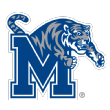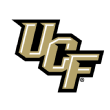If the College Football Playoff committee is going to put a Group of 5 team in the top four (I remain unconvinced that they ever will), it’s clearly going to follow a recipe like this:
-
Enjoy a huge season and earn mainstream respect.
-
Happen to have scheduled a couple of key, major opponents for the next season.
-
Go undefeated that next season.
In 2020, Luke Fickell’s Cincinnati Bearcats resoundingly checked box No. 1, going unbeaten in the regular season, putting together a legitimate playoff case, finishing 9-1 with a last-second loss to Georgia and enjoying their second top-10 finish in program history. They get to check box No. 2, as well, with a schedule that features perfectly-timed road trips to Indiana (Sept. 18) and Notre Dame (Oct. 2).
Now, we have to wait and see about box No. 3. SP+ gives the Bearcats about a 1-in-3 chance of beating both the Hoosiers and Fighting Irish, but they could stand to continue shoring up an offense that was both dangerous and glitchy last fall.
They also have to survive the AAC again. It helps that UCF, Tulsa and SMU all visit Nippert Stadium (and Memphis isn’t on the regular-season slate), but the upside among these teams — Tulsa on defense, SMU and Memphis on offense, UCF in top-to-bottom talent — is fierce. Even this awesome Cincy team barely got by UCF and Tulsa late last season. The top of the AAC should offer plenty of resistance once more.
Every week through the summer, Bill Connelly will preview another division from the Group of 5 and Power 5 exclusively for ESPN+, ultimately including all 130 FBS teams. The previews will include 2020 breakdowns, 2021 previews and a brief history of each team in one handy chart. The series has thus far covered the Conference USA East and West, the MAC East and West, the MWC Mountain and West, the Sun Belt West and East and the bottom half of the AAC.
Jump to a team: SMU | Tulsa | Memphis | UCF | Cincinnati

SMU has won 17 games in the past two seasons under Sonny Dykes, its most since 1983-84. Do the Mustangs have another leap in them in 2021?
2021 Projections
Projected SP+ rank: 65th
Projected record: 7-5 (4-4)
-
Likely wins*: Abilene Christian (97% win probability), North Texas (81%), at Louisiana Tech (81%), USF (80%), at Navy (70%)
-
Relative toss-ups: Tulane (57%), Tulsa (50%), at Houston (47%), UCF (39%), at Memphis (38%)
-
Likely losses: at TCU (24%), at Cincinnati (12%)
* Likely wins are games in which SP+ projects the scoring margin to be greater than seven points, or above about 65% win probability. Likely losses are the opposite, and relative toss-ups are all the games in between.
For two straight years, SMU has been unbeaten into late October but finished with three losses. They are projected favorites in six of their first seven games this year but none of their last five. Same story, then?
What we learned about SMU in 2020
This is one scary skill corps. In two injury-plagued years, Reggie Roberson Jr. has gained 1,277 yards at 19.6 per catch. Rashee Rice and Danny Gray combined for 1,131 yards at 14 yards per catch last year. They’re back, and Dykes added a couple of high-three-star freshmen and four power conference transfers, including former Oklahoma tight end Grant Calcaterra. The run game boasts young hotshot RBs in Ulysses Bentley IV and Tyler Lavine, too, along with five experienced starting linemen.
Departed quarterback Shane Buechele was excellent, but he had a lot of help; the next guy, be it sophomore Derek Green, Oklahoma transfer Tanner Mordecai — there is indeed quite an OU presence, right down to Lincoln Riley’s brother Garrett serving as offensive coordinator — or ESPN 300 freshman Preston Stone, will have help too.
What we didn’t learn about SMU in 2020
Whether the defense has another gear. In Dykes’ three seasons, SMU has ranked 79th, 67th and 76th in defensive SP+ — not horrible, but not great either. Nine starters return from a unit that created havoc but got pushed around a bit by good run games.
Can irascible new defensive coordinator Jim Leavitt craft improvement like he usually does? He should have fun deploying playmakers like corner Brandon Crossley (four INTs, five breakups), linebacker Delano Robinson (six tackles for loss, eight run stuffs) and tackles Elijah Chatman and Junior Aho (combined: 10 TFLs, 11 run stuffs, seven sacks), but the Mustangs need more consistency.
SMU’s history in one chart
-
SMU went 18-1-3 in 1947-48 with one of history’s most unique players: Doak Walker, who in 1948 combined 532 rushing, 304 passing and 279 receiving yards, scored 11 times, picked off three passes and averaged 42 yards per punt.
-
SMU hired Ron Meyer in 1976 following NCAA sanctions, and … well … he and successor Bobby Collins got results. SMU also eventually got the death penalty.
-
In their first seven seasons back, the Mustangs averaged just 2.1 wins per year. It appears the death penalty works a little too well.
-
After 25 years without a bowl, SMU began a run of four straight postseason trips in 2009 under June Jones.
-
Following another slide (25 wins from 2013-18), the Mustangs have ignited under Dykes, going 17-6 since the start of 2019.

Tulsa stuck with head coach Philip Montgomery despite seven combined wins in 2018-19; patience paid off with a 6-3 breakthrough and nearly an AAC title.
2021 Projections
Projected SP+ rank: 55th
Projected record: 7-5 (5-3)
-
Likely wins*: Temple (91% win probability), UC Davis (90%), Navy (83%), Arkansas State (82%), at USF (76%)
-
Relative toss-ups: Houston (64%), Memphis (55%), at Tulane (52%), at SMU (50%)
-
Likely losses: at Oklahoma State (25%), at Cincinnati (16%), at Ohio State (10%)
A rugged road slate could keep the win total tamped down a bit, but a good record in toss-up games could prompt another run to the AAC championship game.
What we learned about Tulsa in 2020
Whew, this defense was something else. In two years under coordinator Joseph Gillespie, Tulsa improved from 96th to 51st to 23rd in defensive SP+. The Golden Hurricane produced tons of negative plays, defended both run and pass efficiently, limited chunk plays and dominated in the red zone.
They lose only one starter from this dominant 3-3-5 structure, but he’s a big one: potential first-round pick Zaven Collins. The 6-foot-4, 260-pound Collins was the best player on the field for nearly every one of his snaps last year, which is obviously worrisome, but he wasn’t the only star. Tackle Jaxon Player (10 TFLs) is a bowling ball up front, middle linebacker Justin Wright puts out every fire and senior corners Allie Green IV and Akayleb Evans are big and physical. It might be difficult to keep playing at a top-25 level, but top 40 is well within reach.
What we didn’t learn about Tulsa in 2020
Whether the offense can pick up slack. If the defense does regress a little, the onus will be on the offense to improve to offset it. It’ll have to happen with a new starter; incumbent QB Zach Smith is gone.
Seth Boomer, last year’s backup, has seen plenty of action through the years, and junior Davis Brin pulled off a huge comeback against Tulane when both Smith and Boomer were hurt. Every receiver is back (including star slot men Josh Johnson and Keylon Stokes), as is Shamari Brooks, a 1,000-yard rusher in 2019 who missed last year with an ACL tear. The line could be loaded, too: All five starters return, including all-conference left tackle Tyler Smith, and the Hurricane add two power conference transfers and 2019 starter X’Zauvea Gadlin, a 2020 opt-out. Decent QB play could result in Tulsa’s first top-60 offensive SP+ ranking since 2016.
Tulsa’s history in one chart
-
A wartime power: From 1942-46, Tulsa won 41 games with four AP top-20 finishes and three major bowl appearances (two Sugars and an Orange).
-
Howard Twilley was maybe the most ahead-of-his-time receiver in history. In 1964-65, he caught 229 passes for 2,957 yards and 29 touchdowns. He was Heisman runner-up in 1965.
-
Steve Largent: another decent receiver. Before a Hall-of-Fame career with the Seahawks, he caught 103 balls for 1,884 yards and 28 TDs at TU in 1974-75.
-
After a decade-long slide, Tulsa got going again, first under Steve Kragthorpe (17 wins in 2005-06), then Todd Graham (three 10-plus win seasons from 2007-10).
-
Recent years have been up and down, but Tulsa fielded its best team in 29 years under Montgomery in 2020.

You know the bar’s high in Memphis when the Tigers can go 8-3 and beat UCF in head coach Ryan Silverfield’s debut and have it feel rather disappointing.
2021 Projections
Projected SP+ rank: 53rd
Projected record: 8-4 (5-3)
-
Likely wins*: Nicholls (92%), at Temple (86%), Navy (84%), ECU (78%), UTSA (76%), at Arkansas State (74%)
-
Relative toss-ups: Tulane (63%), SMU (62%), at Houston (53%), Mississippi State (49%), at Tulsa (45%)
-
Likely losses: at UCF (34%)
Memphis’ SP+ ranking (49th) was its lowest since 2016, and the loss of QB Brady White could lead to a further drop, but a schedule with only two projected top-50 foes could soften the fall.
What we learned about Memphis in 2020
There’s still talent in the skill corps. The Tigers saw major turnover at running back and wide receiver last year, then lost stars Kenneth Gainwell and Damonte Coxie to opt-outs and fell from eighth to 53rd in offensive SP+. Still, Calvin Austin III took a star turn, veteran tight end Sean Dykes proved wonderfully versatile and young slot man Javon Ivory looked like a future star.
The run game was shaky. Although the RBs are more experienced and deep threat Tahj Washington transferred to USC, the skill corps is ahead of where it was. And while two line starters are gone, Silverfield added starters from TCU (Austin Myers) and Cincinnati (Jakari Robinson).
It all comes down to the QB. The race to replace White, a three-year starter, appears wide open between Arizona transfer Grant Gunnell, LSU transfer Peter Parrish and freshmen Keilon Brown and Seth Henigan. Whoever wins the job will have talent around him and a high bar to clear.
What we didn’t learn about Memphis in 2020
Is this the beginning or the end? Memphis’ defense, 52nd in defensive SP+ last year, returns nine starters, including star end Morris Joseph and a killer safety trio of Quindell Johnson, Rodney Owens and 2019 starter La’Andre Thomas. Improvement is likely, and if the new QB of choice settles in, the offense could be solid too.
This feels like the beginning of a new act, though. Silverfield inherited a solid roster and culture from Mike Norvell, and he has seasoned coordinators in Kevin Johns (offense) and Mike MacIntyre (defense). Good recruiting and liberal transfer portal usage means the roster is loaded with raw talent. But can they maintain the strong culture Justin Fuente and Norvell established? Was last year’s regression the start of a downturn or merely a blip?
Memphis’s history in one chart
-
The Tigers went 25-3-1 from 1961-63, which included a 9-0-1 run in 1963 with wins over Mississippi State and South Carolina and a scoreless tie with No. 2 Ole Miss.
-
Led in part by Isaac Bruce’s 1,054 receiving yards, Memphis went 3-0 against the SEC in 1993 (MSU, Arkansas, Ole Miss) … and 3-5 against everyone else. A truly odd year.
-
A moment of appreciation for DeAngelo Williams: From 2003-05, the future first-rounder gained 6,014 yards from scrimmage with 55 touchdowns.
-
After five bowls in six years, the Tigers fell apart. From 2009-11, they went 3-31 against FBS foes, at one point losing 15 straight.
-
Fuente engineered a meteoric rebound, then Norvell took the Tigers even higher; from 2014-19, they enjoyed the first three ranked finishes in their history.

After its first unranked finish in four years, UCF lost one coach (Josh Heupel) to the SEC and replaced him with a coach from the SEC (Gus Malzahn).
2021 Projections
Projected SP+ rank: 38th
Projected record: 9-3 (6-2)
-
Likely wins*: Bethune-Cookman (99%), UConn (98%), at Temple (91%), USF (90%), ECU (85%), at Navy (83%), Tulane (73%), Memphis (66%)
-
Relative toss-ups: at SMU (61%), Boise State (57%), at Louisville (50%)
-
Likely losses: at Cincinnati (23%)
Two enormous September toss-ups (Boise State, at Louisville) will completely define the tenor of Malzahn’s first season in Orlando.
What we learned about UCF in 2020
The ceiling is still high. UCF has ranked in the offensive SP+ top 15 for four straight seasons, and even during a disappointing 6-4 campaign the Knights scored at least 33 points eight times. Malzahn’s résumé is packed with offensive innovation, from Springdale (Arkansas) High to Auburn. His Tiger offenses only once ranked in the SP+ top 25 in his last five years there, but he and co-coordinators G.J. Kinne and Tim Harris Jr. inherit an embarrassment of riches, namely quarterback Dillon Gabriel, wideouts Jaylon Robinson and Ryan O’Keefe and a line that returns intact with two all-conference performers (center Matthew Lee and guard Cole Schneider).
Gabriel already has 7,223 career passing yards, and thanks to everyone receiving a bonus year of eligibility, he’s technically still a sophomore. The Knights have to replace mainstay RBs Greg McCrae and Otis Anderson, but between high-level recruiting and transfers, the Knights have more raw talent in the skill corps than a lot of Power 5 teams.
What we didn’t learn about UCF in 2020
Whether a quick bounce-back is possible for the defense. From the perspective of recruiting rankings, the defense has as much talent as the offense. That wasn’t entirely clear last year, though: The Knights ranked 75th in rushing success rate allowed and 105th in adjusted net yards per pass (ANY/A) allowed. They struggled to knock opponents off schedule, then let them off the hook anyway. Opt-outs and injuries rendered the lineup both young and ever-changing.
Eleven of the 14 players who logged 250-plus snaps are back, and just enough youngsters — tackle Cam Goode, end Tre’mon Morris-Brash, linebacker Tatum Bethune, corner Corey Thornton — showed promise to provide hope of improvement. Tackle Kalia Davis returns from opt-out and transfers Big Kat Bryant (Auburn) and Ricky Barber (WKU) improve the upside up front. But this unit has quite a bit to prove.
UCF’s history in one chart
-
George O’Leary began his tenure with the ultimate Year Zero (0-11) but slowly began to build a ferocious program.
-
In 2007, RB Kevin Smith christened the Bounce House with an all-time season: 2,809 yards from scrimmage and 46 touchdowns.
-
After a run that included a top-10 finish and four seasons with double-digit wins, O’Leary’s tenure ended as it began: with a winless season. The doldrums wouldn’t last.
-
The Knights leaped back to relevance, and then some, in Scott Frost’s second year succeeding O’Leary. They have the banner to prove it.
-
Despite last year’s 6-4 record, the Knights have now finished in the SP+ top 30 for four straight years. They had done so only once in their first 21 FBS seasons.

Luke Fickell turned down other suitors to return to Cincy for a fourth season, then fielded the best Group of 5 team since 2011 Boise State. Now he’s back for Year 5.
2021 Projections
Projected SP+ rank: 15th
Projected record: 10-2 (7-1)
-
Likely wins*: Murray State (99.9% win probability), Temple (99%), Miami-Ohio (98%), at Navy (94%), at USF (94%), at ECU (91%), SMU (88%), Tulsa (84%), at Tulane (82%), UCF (77%)
-
Relative toss-ups: at Indiana (57%), at Notre Dame (56%)
-
Likely losses: none
The schedule-makers did Cincy a favor, both in providing marquee nonconference matchups at the best possible time and in forcing the three best teams on their AAC slate to come to Nippert.
What we learned about Cincinnati in 2020
The ceiling’s even higher than we thought. The Bearcats had improved from 95th to 50th to 34th in SP+ in 2018-19, but there was reason to wonder if they could pull off more growth in 2020. Quarterback Desmond Ridder was intriguing but inconsistent, and he would be working with a green receiving corps.
They pulled off more growth, to say the least, leaping from 32nd to fifth in defensive SP+ and from 65th to 22nd in offensive SP+. The offense struggled with negative plays and situational conservatism. But Ridder was a magician with his arm and legs when behind schedule (UC ranked seventh in passing downs success rate), and Cincy romped through most of its schedule. The Bearcats fell just short against Georgia in the Peach Bowl but more than proved themselves.
The offense is still a bit of an issue. The defense has minimal room for improvement. The Bearcats ranked fourth in success rate allowed and, despite some deep shots from Georgia, sixth in explosive play rate. Defensive coordinator Marcus Freeman left for Notre Dame (Fickell replaced him with old friend Mike Tressel), and while key pieces return — incredible corners Ahmad Gardner and Coby Bryant, end Myjai Sanders, linebackers Joel Dublanko and Darrian Beavers — it’s hard to top “top five.”
Checking the third box mentioned in the intro to this piece, then, will require further offensive improvement. Ridder’s back to pull more rabbits out of his hat, but the negative plays must dissipate (UC was 127th in havoc rate allowed), and that could be tricky without all-conference tackles James Hudson and Darius Harper and always-falling-forward RB Gerrid Doaks.
What we didn’t learn about Cincinnati in 2020
Is there another gear? So many teams return loads of production from breakthrough teams — Cincy, Iowa State, Louisiana — and that would typically suggest further improvement. But do you hit your head on your ceiling at some point? Can the Bearcats find an even higher level, beat Indiana and Notre Dame and give the playoff committee no choice but to include them? I can’t wait to find out.
Cincinnati’s history in one chart
-
Before he became a Hall-of-Fame NFL coach, Sid Gillman won 50 games in six years at UC and led the Bearcats into college football’s top division with an 8-2 debut.
-
After sliding into irrelevance as an independent, Cincy hired Rick Minter in 1994, joined Conference USA in 1996 and began to establish traction.
-
Gino Guidugli: four years as starting QB, 11,453 passing yards, 78 touchdowns and three bowl appearances (Cincy had only been to two bowls pre-Gino).
-
Despite nearly reaching the BCS Championship under Brian Kelly in 2009 and finishing ranked four times in five years, UC lost its power conference status in 2013.
-
UC’s past three years with Fickell: 31-6 record and three ranked finishes. The Bearcats might not be done rising just yet.
